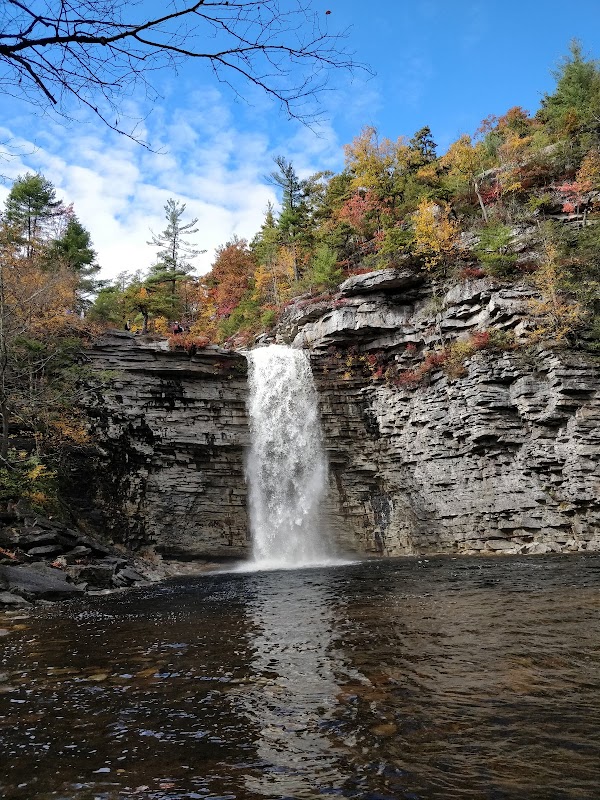
Spring Awakening on the Bedford Audubon Bird Walks: A Practical Guide
The Bedford Audubon Spring Bird Walks bring the thrill of spring migration to Bedford’s forest trails, offering a blend of gentle hiking and focused birdwatching. Ideal for both casual explorers and nature enthusiasts, these walks provide a clear window into nature reawakening with practical tips to gear up and get out.
Bring Binoculars and a Field Guide
Opt for compact binoculars and a local bird guide to identify species on the fly and enhance your experience.
Wear Layered Clothing
Spring weather varies; layers allow you to adapt from cool mornings to warmer afternoons and sudden rain showers.
Hydrate Before and During the Walk
Carry at least one liter of water, especially for longer walks, to stay energized and alert for bird activity.
Tread Softly and Stay on Marked Paths
Respect nesting areas by minimizing noise and avoiding off-trail hiking to protect sensitive wildlife.
Spring Awakening on the Bedford Audubon Bird Walks: A Practical Guide
As the chill of winter fades, Bedford, New York, stirs to life with the return of migratory birds that thrust the Bedford Audubon Spring Bird Walks into full swing. These hikes offer an invigorating blend of purposeful trekking and attentive birdwatching, where every forest whisper and leaf rustle demands your keenest attention. The walks span roughly 3 miles over gently rolling and well-maintained trails, with elevation changes topping out around 200 feet—accessible to hikers of varied skill levels but rewarding for those attuned to nature’s pulse.
The trails wind through mixed hardwood forests and open meadows, a setting alive with early blooms and the sharp, melodic calls of species just arrived for nesting. Birds like the scarlet tanager and wood thrush claim their territories, daring you to spot them among the fresh greenery. Underfoot, damp leaves and soft earth cushion each step while sunlit clearings invite you to pause and scan the branches above.
Timing your visit between late April and early June maximizes sightings during peak migration and breeding displays. Mornings are prime; the light filters low, shadows long, and birds are active before the heat settles in. Bring sturdy, broken-in hiking shoes to manage occasional roots and mud. A water bottle, binoculars, and a field guide will shift your eye from trail markers to tree canopies, where the real show unfolds.
The walk is not just about ticking species off a checklist but about engaging with a landscape fiercely itself—a mixed pace of curiosity, quiet, and motion. Listen for the insistent chatter of chickadees or the sudden rush of wings as a startled hawk rips through the canopy. The environment challenges your senses, asking for patience and respect.
Weather can be unpredictable in spring; layers are essential. Light rain might invite the chorus of frogs and usher in a fresh, dampened air, sharpening the scents of moss and wood. The trails can be muddy, so expect to adjust your stride accordingly. Staying alert to footing and surroundings keeps the experience safe and immersive.
Planning ahead involves parking at the Bedford Audubon Center, where signage directs hikers onto trails maintained by dedicated volunteers. The center offers maps and updates on recent bird sightings, an invaluable resource for tailoring your route. Dogs are discouraged to preserve the delicate nesting grounds.
If you’re seeking a day to mix gentle exercise with a fresh appreciation of spring’s frontier, these bird walks answer with clarity and quiet thrill. This is an adventure where preparation meets discovery, and the environment remains an active partner rather than a backdrop.
Nearby Trips
All Adventures
Boat Charters
Water Activities
Adventures near Bedford, New York
Discover the unique and memorable adventures that make Bedford, New York special.
Frequently Asked Questions
Are the Bedford Audubon Spring Bird Walks suitable for children?
Yes, the trails are moderate in length and difficulty, making them accessible for older children with supervision. The educational aspect of birdwatching adds value for young learners.
Can I bring my dog on the bird walks?
Dogs are discouraged on these trails to avoid disturbing nesting birds and sensitive wildlife habitats.
What bird species are most commonly seen during the spring walks?
Look for scarlet tanagers, wood thrushes, warblers, and various sparrows. Migration peaks in May when diversity is at its highest.
Is parking available at the Bedford Audubon Center?
Yes, there is a small designated parking area at the center from which the walks begin. Arrive early on weekends to secure a spot.
Are guided tours available for these bird walks?
The Bedford Audubon Society occasionally offers guided walks led by expert birders, especially during peak migration. Check their event calendar before visiting.
What is the best way to prepare for muddy or wet trail conditions?
Wear waterproof shoes or boots, bring gaiters if possible, and carry trekking poles for stability on slippery areas.
Recommended Gear
Waterproof Hiking Shoes
Protects feet from muddy trails and wet conditions common on spring bird walks.
Binoculars
Essential for spotting birds at a distance and enhancing observation.
Layered Clothing
Allows quick adjustment to fluctuating temperatures and weather.
Insect Repellent
Helpful for warding off mosquitoes and black flies during warmer, damp days.
Local Insights
Hidden Gems
- "A quiet overlook near Hatch Pond offers expansive views and less-trafficked birdwatching spots."
- "A small vernal pool on the southern trail attracts early amphibians and waterfowl."
Wildlife
- "Spring salamanders can be spotted near stream crossings, and warblers flit through the canopy."
- "Barred owls are known to call from dense woodlands within the preserve."
History
"The Bedford Audubon Society was established in the mid-20th century to protect migratory bird habitats threatened by suburban development. The center grounds were once farmland, transformed into conservation land through local advocacy."
